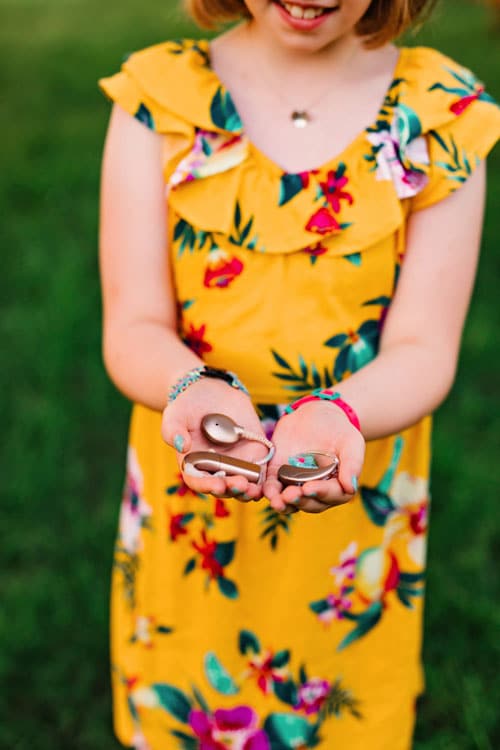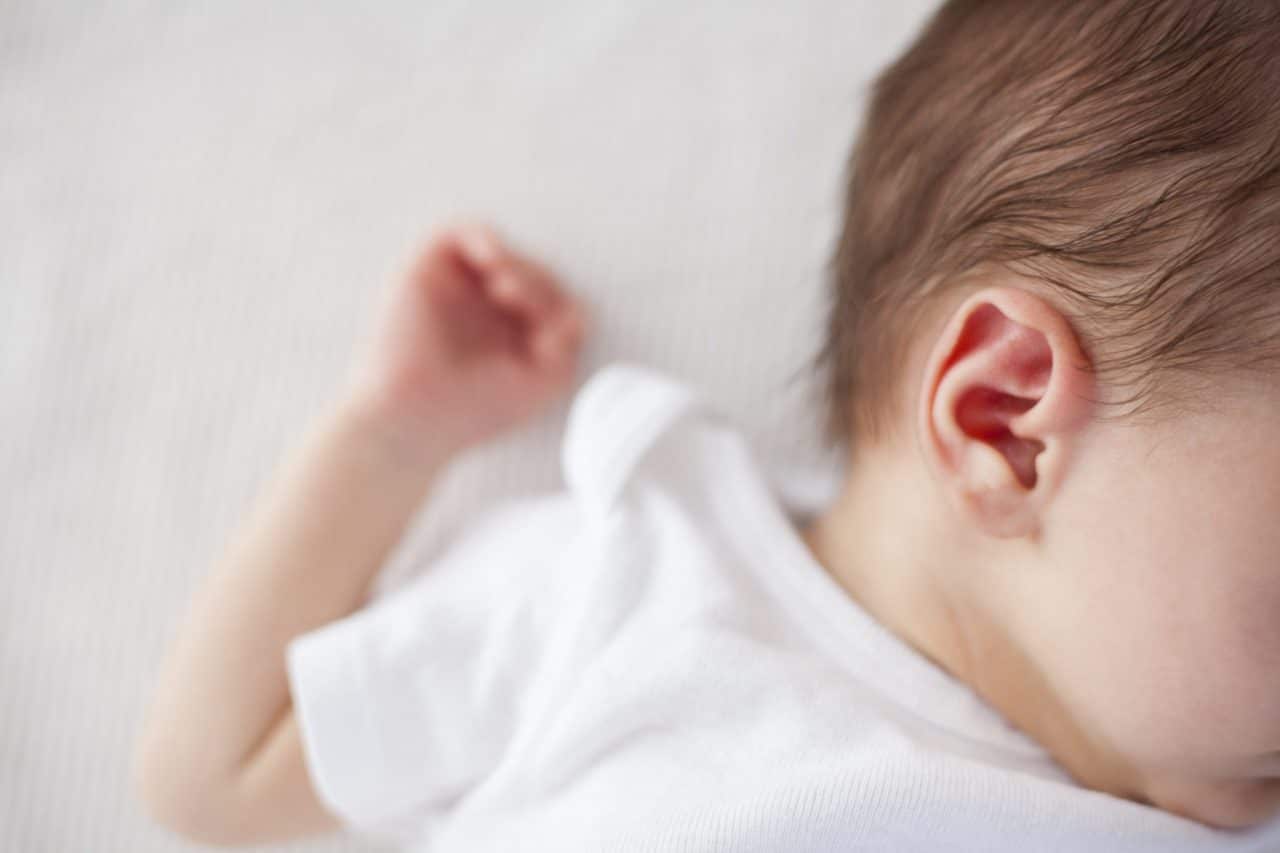Children and Hearing Loss

- Though most people don’t often think about hearing loss, there are over 1 million deaf individuals (those with profound hearing loss) in the United States. Over four times that number have severe hearing loss. Four thousand deaf children are born each year. About 3 out of 1000 children have a major hearing impairment.
- Ninety percent of hearing impaired children are born to normal hearing parents who usually do not know how to help them.
Helpful Hint
Locating a team of professionals when hearing loss is identified can greatly benefit the child and family by directing them to specialists and schools that can help. No child is too young to be helped by medical treatment and advanced hearing technologies, therapy and education.
Genetics
- 50-60% of babies born with hearing loss have genetic causes.
- Over 100 of the most common genetic disorders are related to hearing loss
- Nearly 25% of the genes in the human genome are likely to be involved in hearing since they are expressed in the developing human cochlea.
- Two deaf parents with unknown genetic information have a 10% chance of having a deaf child.
- 30% of children born with hearing loss have had Infections during pregnancy, prematurity, and /or other complications of their mother’s pregnancy.
Helpful Hint
Current genetic testing can inform parents of the likely cause of their child’s hearing loss; test results also educate parents regarding the chance that other children they have might will be affected.
Congenital Cytomegalovirus Infection

- Approximately 1% of all children are born with intrauterine exposure to cytomegalovirus (CMV), the most common intrauterine infection in the United States. For the approximately 40,000 babies born with CMV infection each year in the US, death results in 10% and the approximately 8000 children who survive suffer from various permanent disabilities such as hearing impairment, vision loss, mental retardation, or a combination of disabilities. CMV-related disabilities are more common than Down’s syndrome, fetal alcohol syndrome, or spina bifida.
- 8-12% of babies born with congenital CMV may have no obvious signs evident at birth, yet will go on to develop sensorineural hearing loss– the most common disorder caused by this infection.
- Because testing for CMV infection is usually not done at the time of birth, it is difficult to estimate the proportion of sensorineural hearing loss in children that is caused by it. Studies estimate that 20% of babies born with hearing loss have CMV infection as the cause. Whether or not a child born with CMV infection has hearing loss present at birth, 50% will eventually develop hearing loss that worsens over time.
- Progressive hearing loss from congenital CMV infection can be treated with anti-viral medications, but only if it is diagnosed in the newborn period. Though not in place at this time, universal newborn screening for CMV infection could help identify those who may benefit from such treatment.
Helpful Hint
The vast majority of young women have never heard of CMV or the conditions that it can cause to their newborn. Effective maternal prevention behaviors include handwashing, not sharing drinking glasses or eating utensils with young children, and not kissing young children on the mouth before and during pregnancy. Because of the prevalence of this infection and the potential delayed onset of hearing loss, new mothers should be watchful of hearing problems in their child and seek help as soon as it is suspected.
Newborn Screening
- Hearing loss is identified in newborns more often than all other disorders for which newborn screening tests are done. Universal Newborn Hearing Screening (UNBHS) has been implemented in all 50 states. However, 23-30% of infants who are later found to have permanent hearing loss passed their NBHS. Passing a NBHS may create a false sense of security in the parents and physicians about a child’s potential for hearing loss and cause them to present late for intervention. This fact is support for testing all children again for hearing loss at 10-12 months of age.
- UNBHS has reduced the average age of identification of hearing loss in children from 26 months to the 3 months, and the age of hearing aid fitting from 30 months to 6 months. If a child passes their NBHS and yet subsequently develops hearing loss, the average age of presentation is greater than 4 years old.
- Optimal hearing and spoken language outcomes in children with hearing loss are closely tied to early diagnosis and intervention with medical treatment, hearing technologies and speech and hearing therapy. Early treatment and intervention take advantage of the critical time period of auditory cortical brain development which, with late intervention, can never be fully reversed.
Helpful Hint

If identified with hearing loss, it is important that your child receive a thorough evaluation as soon as possible by a physician who specializes in ear disorders. Such an ear specialist should work on a team with audiologists, speech and hearing therapists, and special educators; they can guide you through the best possible care for your child.
Associated Disabilities
- About one in every four children with hearing loss also is born weighing less than 2,500 grams (about 5 1/2 pounds).
- About 40 percent of children with hearing loss exhibit another disability. The prevalence of learning disability in this population is estimated to be 8.0% and the prevalence of autism spectrum disorders to be 1.7%.
Helpful Hint
Children with hearing loss often have other disabilities that require a multidisciplinary approach to treatment.
Facts About Adults and Hearing Loss

- Noise and ageing are the most common causes of adult onset hearing loss. Genetic predispositions affect the degree to which age and noise result in hearing loss in adults.
- 14% of adults ages 45-64 have some degree of hearing loss, as do 33% of people over age 65 and 67% of individuals over age 75.
- Age-related hearing loss, known as presbycusis, causes permanent changes in the inner ear, resulting in slow but steady hearing loss.
- In older people, hearing loss is often confused with, or complicated by, conditions such as dementia.
- Sudden extreme noise, such as a gun shot at close range, can lead to immediate and permanent hearing loss, even with only one exposure.
- Frequent noise exposure is one of the leading causes of hearing loss: it may happen slowly over time. Being exposed to everyday noises, such as listening to very loud music or being in a noisy work environment can lead to hearing loss that comes on gradually over many years.
- There are many ear disorders that can lead to progressive hearing loss in adults, such as infections, cholesteatoma, Meniere’s disease, otosclerosis, autoimmune inner ear disease, and sudden sensorineural hearing loss. In addition, there are many other general medical conditions that can have a negative effect on hearing, including diabetes, kidney failure, autoimmune conditions such as Crohn’s disease and ulcerative colitis, HIV infection, multiple sclerosis, and meningitis, to name only a few.
- Severe tinnitus (ringing or other noises in the ears) frequently accompanies hearing loss and may be just as debilitating as the hearing loss itself. It is estimated that 50 million people in the US are affected by tinnitus. Of these, about 16 million have severe enough tinnitus to seek medical attention. About two million are so seriously debilitated that they cannot function on a “normal,” day-to-day basis
- Adults with hearing loss typically wait on average 7 years before seeking medical attention.
Helpful Hint
All individuals with hearing loss should seek an evaluation from an audiologist or ear physician. Seeking help early can add years of satisfaction to a person’s social life and work productivity.
Links
- Cochlear Baha Implant – Makers of the Cochlear Baha Implant
- Cochlear – Makers of the Nucleus Cochlear Implant
- MEDEL – Makers of the Combi 40+ Cochlear Implant
- Advanced Bionics Cochlear Implant – Makers of the Clarion Cochlear Implant
- Auditory-Verbal Therapy: Hear in Dallas – Provides pre and postoperative aural rehabilitation to children and adult cochlear implant recipients.
